Arts and Culture
Business Strategy
Article
The Culturephiles
9a6fb92b-1c15-4e2c-bce5-c6e36d8d8ebc
8 min
https://edge.sitecorecloud.io/tessiturane75c3-tessituraneee12-development-6640/media/Images/Stock-Photography/sunrise-running-anthony-tuil-768x465.jpg?h=465&iar=0&w=768
What Tessitura has learned from six months of listening
Six traits of forward-looking cultural organizations

President & CEO, Tessitura
Six traits of forward-looking cultural organizations
9/9/2020
8 min
Since the start of the pandemic, we at Tessitura have listened.
We’ve always prided ourselves on being good listeners, but in the past several months it has reached a whole new level.
We’ve listened to arts and culture leaders, managers and line staff. To theaters and museums, zoos and symphonies, arts centers, and dance companies. We’ve listened to fundraisers, marketers, technologists, educators. We’ve listened at board meetings, round tables, panels and town halls, in help tickets, online forums and chat rooms. We’ve listened in early morning working sessions and late-night chats.
We’ve listened to the pain of layoffs, the anguish of budget cuts and the anxiety over an uncertain future.
And we’ve also heard, against all odds, what is working right now.
We’ve heard threads around operations, communications, experiences. Themes at organizations faring better than others. Stories around organizations finding hope in all the pain. Traits around forward-looking organizations that — if not thriving — are surviving with more vigor than others.
Ultimately, we found that these organizations had one or more of six traits in common. Six traits that point to a semblance of success amidst these difficult times.
The “Six Traits” began as an internal exercise. We wanted to document them for ourselves to ensure that the technology and services we provide can support these traits. In the past few months, we have aligned every aspect of our work around them.
But it was always our goal to share the Six Traits as well. While we have been responsible for the synthesis, the real authors are the cultural professionals around the world who have inspired us with their innovative ideas and scrappy responses to this time.
Below are the Six Traits in miniature. In the coming weeks, I will share more stories, innovations and ideas that highlight each of them in more detail.
Six traits of forward-looking cultural organizations
1. They Aim to Engage All Audiences
Building audiences in a pandemic might seem like an exercise in futility. But as the pandemic has become interwoven with a renewed and urgent spotlight on systemic inequality, forward-looking organizations have come to see that the first work must be to engage your whole community.
At a moment when our doors are closed, when the roar of the crowd is hushed, there is no better time to look inward and ask two fundamental questions:
- Who is the community we exist to serve?
- How well are we engaging them all?
Kwame Kwei-Armah is Artistic Director at the Young Vic Theatre. When we spoke in June, he had this to say: “Our theatres have to look like our cities. In London, Black and people of color are over 45% of the population. Therefore, if I walk into any theatre and you are less than 45%, you’ve got work to do.”
Kwame pointed to his own theater as one that still has work to do and suggests the way forward: “You’ve got to look at what structural pathways have been blocked and what structural pathways you can put in place in order to accelerate diversity, equality and inclusion.”

Kwame Kwei-Armah, Artistic Director of the Young Vic
“You’ve got to look at what structural pathways have been blocked and what structural pathways you can put in place in order to accelerate diversity, equality and inclusion.”
— Kwame Kwei-Armah
Those pathways and the blocks to pathways start at home. Before your theaters and galleries will genuinely attract diverse audiences, your offices, stages, and boardrooms must reflect that same diversity. We can all (Tessitura included!) work to build these new pathways now so that when the time comes to throw open our doors, we can welcome an audience that reflects our whole community.
2. They Continually Strengthen Relationships
If Trait 1 speaks to the importance of building an inclusive audience, Trait 2 calls out the imperative to deepen your relationships with that audience. Through social media, live-streams, virtual museum tours and many other digital activities, cultural organizations are doing their best to keep in touch while their doors are closed.
These efforts are necessary and welcome. But the forward-thinking organizations are doing more than just reminding folks that they exist. These organizations are taking this time to strengthen bonds with their community.
One sterling example comes from Ballet Austin. Rather than taking the straightforward approach of “ballet, but online,” they took a step back. Executive Director Cookie Ruiz explained to me how they thought about this moment, which essentially boiled down to two important questions:
- What does our community need in the midst of a pandemic?
- What are we amazing at that can help meet that need?
Through that lens, Cookie and her team had their answer. What does a community need in a pandemic? To be well. What are they amazing at? As Cookie reminded me, “the encouragement of health and well-being” is literally in Ballet Austin’s mission.
Over a single weekend they launched the Be Well program: a series of online vignettes from their professional corps and staff sharing tips and advice on how to be healthy, be creative, be generous and be happy.
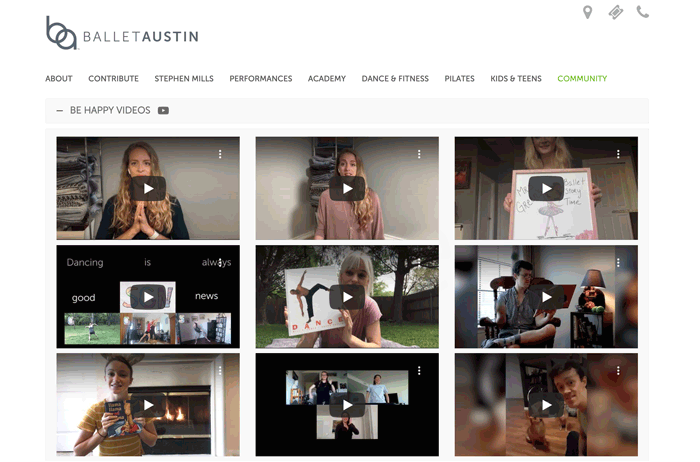
Screenshot from the Be Well landing page
Ballet Austin has leveraged what they are really good at: health, wellness and artistry, and utilized it to help the wellbeing of their community. And the response has been overwhelming. I can think of no better way to continually strengthen relationships with your community than to use your inherent talents to help your community thrive.
3. They Diversify their Revenue Streams
As my colleague Erin Koppel, Tessitura SVP for Consulting, is fond of saying: “Revenue follows engagement.” With broader audiences from Trait 1 and deeper connections from Trait 2, we can see that forward-looking cultural organizations are expert at engagement. And how do they turn this engagement into revenue?
In a wealth of different ways.
These organizations are wary of relying on a single revenue stream. Any financial advisor will tell you that an unbalanced investment portfolio is risky in a turbulent economy, and a cultural organization’s revenue portfolio is no different.
Even in these challenging times, intrepid cultural organizations are inventing new revenue streams. I recently heard a particularly successful one from Carrie Gergley, Interim Managing Director at the Groundlings Theatre and School.
The Groundlings Theatre provides improv classes and shows in their theater spaces in Los Angeles and in normal times has a revenue mix of ticket sales, class registrations and fundraising. The pandemic initially knocked tickets and class registrations out of the equation. Within weeks they had moved their classes and shows online.
What have they accomplished? Prior to the pandemic, their audiences and students were all local to Los Angeles. Now more than one third of their students come from out of town, including some as far away as Australia, and they are on track to match or exceed their pre-pandemic earned income levels.
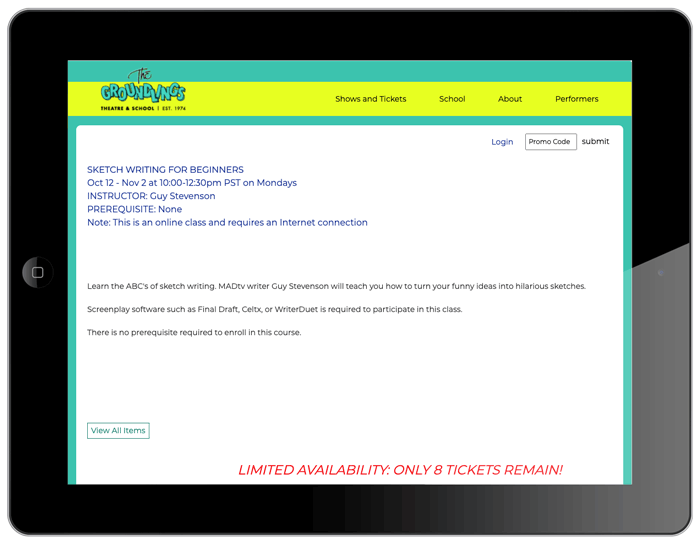
Screenshot of an online class from The Groundlings
Consider their success in terms of the first three traits: by reimagining their potential community as a global community, they have created a bigger tent (Trait 1: Engage All Audiences); by effectively continuing all of their programs online, they haven’t had to slow down their programming (Trait 2: Strengthen Relationships) and by launching a full online schedule they have developed an entirely new revenue stream (Trait 3: Diversify Revenue Streams). When I asked Carrie if they would retain the online programming once their physical theater reopens, she told me it was likely.
And why wouldn’t they? They have found a global audience, strengthened bonds with them and diversified their revenue stream.
4. They Streamline All Aspects of Operations
Trait 3 centers on your revenue. But a balance sheet has two sides: income and expense. As budgets drop precipitously, you need to look at the expense side of the equation as well. The forward-looking organizations keep their missions at the forefront as they focus on this side of the balance sheet.
Return to your mission: I’ll bet it centers on connecting your community with your culture. Is there any aspect of your operations not directly associated with producing culture or connecting with audiences? Are there any bottlenecks holding back productivity?
When the Dallas Zoo learned that the State of Texas would allow them to reopen in May, they recognized that they would need to have all attendees purchase admissions in advance, in order to control capacity and reduce physical contact.
“Forward-looking organizations keep their missions at the forefront.”
As CEO Gregg Hudson explained to me, they went from 10% online sales to 100% in just a few weeks. While this was necessitated by the pandemic, it allowed them to streamline many aspects of their business — from admissions to data collection to ticket delivery. Overnight, many aspects of their business were more efficient and effective through what amounted to an overnight digital transformation.
And the benefits continue: now that they have customer information for all of their visitors, they have visibility into who their audiences are (Trait 1), which allows them the opportunity to strengthen relationships with them (Trait 2), leading to the opportunity to derive new revenue from them (Trait 3). Their subscribed mailing list is significantly larger than before the pandemic.
As staff size and budgets are cut dramatically, cultural organizations need to look at all aspects of their business and determine what is essential, what can be outsourced and where they can leverage digital solutions to provide efficiency.
5. They Enable Safe Gathering
Cultural organizations exist to physically bring humans together. The global pandemic has devastated so much of our ability to do the one thing we all work to accomplish. As some organizations begin to cautiously reopen, never has safety been more paramount. Cultural organizations are spending huge amounts of time, effort and money to ensure their audiences can return and gather safely.
At Tessitura, a great deal of our recent technological innovation has been spent on Trait 5. As one arts CIO remarked to me early in the pandemic, “The word of the year is contactless.” In addition to contactless payment (which we already had) we have responded with contactless ticket sales as well as contactless admission scanning — allowing visitors to scan their mobile tickets without ever approaching a human.
Performing arts organizations have their own challenges and most remain closed. While a museum or attraction has more room to work with and better flow patterns, performing arts requires (and normally embraces) having audiences cheek to jowl in a theater. In the age of COVID, no one wants their cheeks anywhere near someone else’s jowls. As a result, much has been discussed about the pros and cons of “physically distanced seating” in auditoriums.
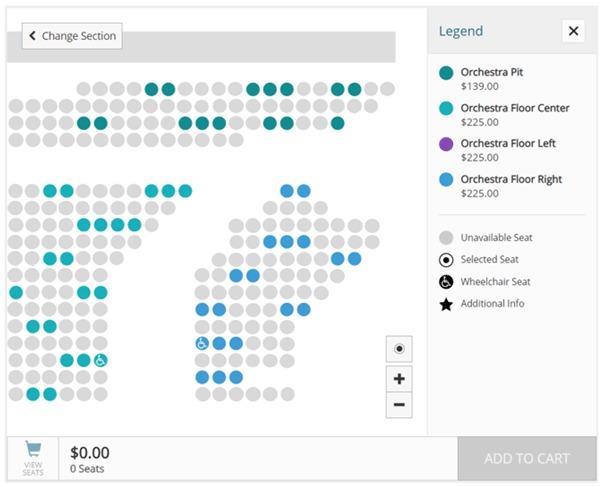
In response, Tessitura has developed an entire methodology for how to do this, for those intrepid organizations looking to implement it. Those high-performing organizations seeking a path to reopening are doing it safely.
6. They Transform Traditional Experiences
Some organizations are hunkering down and waiting out the pandemic. Others are taking their existing product and shifting it wholesale to a digital form. The ones we find the most exciting right now, are those forward-thinking organizations that are taking this moment to try something transformative. Whether these new experiences ultimately endure, we expect that those who thrive after the pandemic will embrace the idea of transformation in the midst of it.
While originally cancelling their entire summer season, Bravo! Vail in Colorado, reversed that decision and developed a novel new way to connect people with culture. They built the Bravo Vail Music Box: a small stage on a trailer that can be driven to any number of fields, backyards, parking lots or anywhere else that people can gather in a socially distant way. With a soloist or duo performing on the portable stage, they bring their world-class musicians to the people of Vail throughout the summer.
“We expect that those who thrive after the pandemic will embrace the idea of transformation in the midst of it.”
Meanwhile, the Austin Opera has commissioned what would have been a live production of Schubert’s vocal masterwork “A Winter’s Journey” as a new film in collaboration with local immersive tech firm Subvrsive. It has all of the power of Schubert’s work, reconsidered for the technology of the modern age, complete with an alternate reality aspect that allows audiences to immerse directly into this psychological thriller of a piece. Learn more about the genesis of this transformative experience in this Innovators in Conversation talk with Austin Opera’s General Director Annie Burridge.
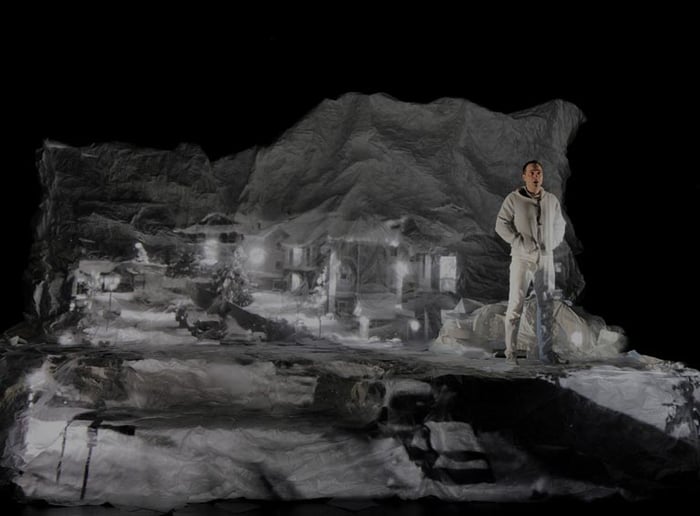
Still photo of Austin Opera’s Winterreise/Winter Journey
• • •
We are all in the business of connecting people with culture: pandemic or not. Through thousands of conversations this year, we see that these Six Traits help forward-thinking organizations muscle ahead during challenging times.
In the coming weeks, I will be sharing more innovations and stories from Tessitura member organizations that are exhibiting the six traits — stay tuned!
• • •
If you would like to learn more about the Six Traits and evaluate how your own organization is demonstrating them, download our strategy guide.
Top photo by Anthony Tuil on Unsplash
Topics
Arts & Culture
/Business Strategy
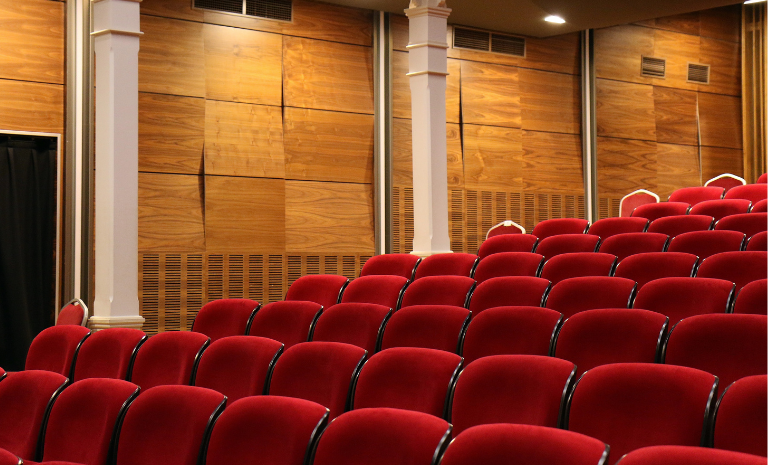
Make your on-sales a success
Ticketing & Admissions / Digital / Customer Service / Technology
Eight tips to help you plan for a smooth on-sale

A contactless customer journey with a personal touch
Arts & Culture / Business Strategy / COVID-19 / Technology / Ticketing & Admissions
How Georgia Aquarium creates a visitor-focused experience